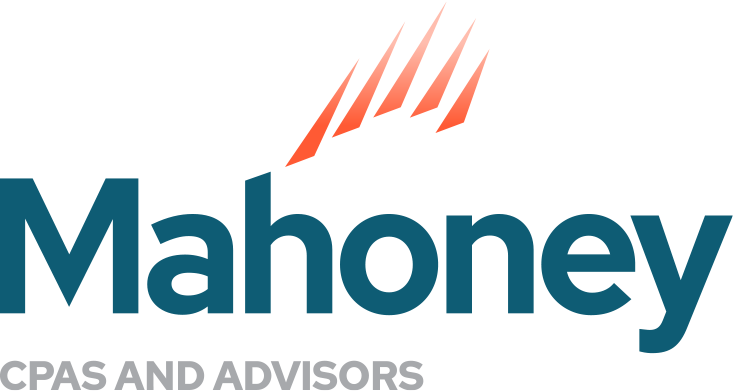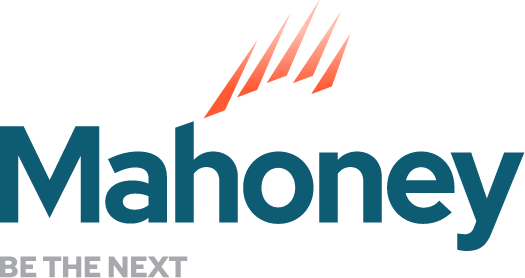REST Easy with Mahoney May 2025
Important News for the Affordable Housing Industry

Applicable Federal Rates (AFR)
| Annual | Monthly | |
| Short-Term | 4.34% | 4.25% |
| Mid-Term | 4.52% | 4.43% |
| Long-Term | 4.86% | 4.75% |
| Annual | Monthly | |
| Short-Term | 4.31% | 4.22% |
| Mid-Term | 4.46% | 4.37% |
| Long-Term | 4.82% | 4.71% |
| Annual | Monthly | |
| Short-Term | 4.16% | 4.09% |
| Mid-Term | 4.21% | 4.13% |
| Long-Term | 4.61% | 4.52% |
| Annual | Monthly | |
| Short-Term | 4.05% | 3.98% |
| Mid-Term | 4.10% | 4.03% |
| Long-Term | 4.62% | 4.53% |
| Annual | Monthly | |
| Short-Term | 4.00% | 3.93% |
| Mid-Term | 4.07% | 4.00% |
| Long-Term | 4.77% | 4.66% |

Upcoming Deadlines
By Logan Wolfe
MHFA
~ 2025 Carryover Application: 11/1/2025
~ 2024 Final CPA Certification: 5/1/2025
~ Low Income Housing 9% projects: 2025 Multifamily Consolidated RFP/2026 Round 1 Tax Credit Allocation Applications: 7/10/2025 @ noon (12:00 p.m.)
Links: Consolidated RFP HTC, MHFA_283614.pdf
CPED
~ 2025 Carryover Application: 11/1/2025
~ 2024 Final CPA Certification: 11/1/2025
~ St. Paul Low Income Housing 9% RFP Tax Credit Allocation Applications: TBD but anticipating mid-July.
~ Minneapolis Low Income Housing 9% RFP Tax Credit Allocation Applications: TBD but anticipating mid-July
Links: HTC-Procedural-Manual.pdf,
Dakota County CDA
~ 2025 Carryover application: 10/15/2025
~ 2024 Final CPA Certification: May 1 of the calendar year after the allocation is made (May 1, 2026 for 2025 Credits)
~ Low Income Housing 9% projects: RFP Round 1 Tax Credit Allocation Applications: 7/10/2025 @ noon (12:00 p.m.)
Links: 2025-Procedural-Manual-FINAL.pdf
Washington County CDA
~ 2025 Carryover application: 10/1/2025
~ 2024 Final CPA Certification: 10/1/2025 (if extension was received)
~ Low Income Housing 9% projects: RFP Round 1 Tax Credit Allocation Applications: 7/10/2025 @ noon (12:00 p.m.)
Links: Financing Options – Washington County Community Development Agency
Other
~ Unified Pool for Tax Exempt Bonds via MMB applications to be formed on 7/1/2025.
~ Partnership Tax return due date with extension 9/15/2025
~ Individual and C Corp Tax Return Due Date with Extension- 10/15/2025
~ Met Council LCDA grant application – 8/11/2025
~ Ramsey County 2025 Housing Solicitation applications – 5/29/2025
Links:
currentavailablebalances / Minnesota Management and Budget (MMB)
Livable Communities Grants – Metropolitan Council
Affordable Housing Infrastructure Investments | Ramsey County

Legislative Updates
By Teddy Ferret
Federal Update:
Affordable Housing Credit Improvement Act
The Affordable Housing Credit Improvement Act (AHCIA) was reintroduced to the House of Representatives in April 2025 with significant bipartisan support. The bill is intended to expand and support the low-income housing tax credit program by reducing development barriers and provide tax incentives to developers. Some of the ways that the AHCIA has proposed to do this include reducing the 50% tax- exempt bond test to 25% for 4% housing tax credit developments; allowing relocation costs to be capitalized for rehabilitation projects; and providing basis boosts up to 50% for developments with 20% of tenants that classify as extremely low-income.
On May 22nd, the U.S. House of Representatives passed the One Big Beautiful Bill Act that included the following proposals from the AHCIA:
• reducing the 50% tax exempt bond test to 25% for 4% housing tax credit developments
• boosting eligible basis by 30% for properties built in Native American and rural communities.
• Increasing 9% housing tax credit allocations by 12.5% for 2026 to 2029
State Update:
Housing Finance and Policy Bill (HF 2445/SF 2298)
The MN Housing Finance Bill within the MN Omnibus Bill passed the MN House of Representatives in April 2025. The bill is intended to increase funding for MHFA and increase oversight/transparency regarding the affordable housing industry. The bill authorizes MHFA to issue an additional $100 million in housing infrastructure bonds and have $75 million in funds appropriated to the agency for debt service expenses. The bill also includes various requirements for MHFA such as yearly reporting on the financial stability of the affordable housing industry; meeting with the Interagency Council to End Homelessness at least once a year; and establishing a task force on homeowners and commercial property insurance.
Commencing a Section 1031 Exchange for Real Estate Professionals
By Kyle Krenske

A Section 1031 exchange offers a strategic opportunity to defer capital gains taxes by reinvesting proceeds from the sale of real property into a like-kind property. This tax deferral mechanism is particularly beneficial for real estate professionals looking to optimize their investment portfolios without immediate tax liabilities.
Structuring the Exchange
The cornerstone of a Section 1031 exchange is that it must be structured as an exchange rather than a regular sale and subsequent purchase of real property. This means the transaction should involve a reciprocal transfer of properties through a qualified intermediary, ensuring it is not merely a sale and acquisition of real property. This distinction is crucial for qualifying under Section 1031.
Property Qualification and Like-Kind Requirement
In a Section 1031 exchange, the property sold is referred to as the “relinquished property,” while the property purchased is known as the “replacement property.” Both the relinquished property and the replacement property must be real property held for productive use in a trade or business or for investment purposes. Properties held primarily for sale do not qualify for a Section 1031 exchange. Additionally, the properties involved in the exchange must be of like-kind, referring to the nature or character of the property, not its grade or quality. For real estate, this generally means that any real property can be exchanged for any other real property such as building, land and land improvements.
Generally, the replacement property’s purchase price and new debt will need to be equal to or greater than the sale price and debt paid off on the relinquished property. Also, the taxpayer cannot receive any of the proceeds from sale of the relinquished property in order to defer all of the gain through a Section 1031 exchange transaction. It is essential to analyze the details of the replacement property (or properties) to ascertain the potential tax implications.
Utilizing a Qualified Intermediary (QI)
A Qualified Intermediary plays a pivotal role in facilitating the exchange. The QI holds the proceeds from the sale of the relinquished property which is to be used to acquire the replacement property on behalf of the exchanger. It is important to note that the QI must not be related to the exchanger and should not have acted as the exchanger’s agent within the two-year period ending on the date of the transfer of the relinquished property.
Identification and Exchange Periods
Timing is crucial in a Section 1031 exchange. Replacement property must be identified within 45 days of the relinquished property sale/transfer. Furthermore, the exchange must be completed within 180 days or by the due date of the taxpayer’s return for the year of the transfer, whichever is earlier.
Documentation and Intent
A written agreement between the exchanger and the QI is necessary, specifying the QI’s role in holding the property for the benefit of the exchanger to facilitate a Section 1031 exchange. Additionally, the exchanger must have a bona fide intent that the property will be part of a Section 1031 exchange at the time the QI or exchange accommodation titleholder receives the property.
By adhering to these steps and the requirements of Section 1031, a tax deferred exchange can be utilized to defer taxes and strategically manage investment portfolios. This process not only provides significant tax advantages but also enhances the flexibility and growth potential of real estate investments.
2026-2027 QAP Updates: Progress through Policy
By Nathan Plack

Minnesota Governor Tim Walz approved Minnesota’s Housing Tax Credit (HTC) Qualified Allocation Plan (QAP) on February 21, 2025. The QAP is effective for the 2025-2026 Multifamily Consolidated RFP’s and 2026-2027 HTC Awards.
The 2026-2027 QAP includes some important updates based on numerous discussions and forums between stakeholders over nearly 2 years. This article will highlight a few of these updates and takeaways for developers seeking to align their project goals with the strategic initiatives of Minnesota’s allocating agencies.
Nonprofit Sponsors – Right of First Refusal
Chapter 3, Section U of the 2026-2027 QAP includes the requirement that all qualified nonprofit organizations holding ownership in 4% and 9% HTC projects be granted a right of first refusal (ROFR) to the nonprofit, so long as the project continues to be operated and subject to tax credit compliance regulations under Section 42 of the Internal Revenue Code (IRC) for the remainder of its Land Use Restriction Agreement (LURA). The ROFR must be included in the partnership/operating agreement, must be recorded against the property and will be reflected in the HTC legal agreements and in the LURA.
Geographic Location – Strategic Advancement for Greater Minnesota
The new self-scoring worksheet accompanying the 2026-2027 QAP adds criteria that allows projects in rural cities be more competitive, including the areas of Access to More Affordable Housing, with broadened tiers of communities, and Transit and Walkability enhancements to scoring for all Greater Minnesota communities.
Innovative Construction Techniques
Projects may now receive points by pre-applying with MHFA for the use of innovative construction techniques. Submissions for such projects are required to meet a list of conditions that qualify as innovative, one of which is the achievement of one or both of the following goals i) reduction in total construction costs of at least 10% and/or ii) reduce the construction period time by at least 20%. This imperative alone underscores the importance of developer/sponsor relationships with vendors and service providers, but in addition, developers must demonstrate the techniques used can be replicated for future projects, provide public “case-study” style reports that inform future projects, and comply with existing timing, design and compliance standards.
Preservation Projects
The 2026-2027 prioritizes the preservation of existing affordable housing projects with increased points available for projects with existing federal assistance, particularly project-based rental assistance. For example, projects with greater than 50% of units being federally assisted receive the maximum points available in self-scoring, vs. a more tiered scoring structure in the previous QAP. Additionally, there is scoring consideration in the new QAP for preservation projects demonstrating critical physical needs of $15,000 or more.
These and other updates to the 2026-2027 QAP demonstrate Minnesota’s continued efforts to expand the access to affordable housing for renters while also expanding the pool of developers, including BIPOC and women owned enterprises, in a step forward for Minnesota in addressing the ever growing need for equitable and affordable housing.
For the latest in technical guidance or questions regarding the new QAP and what it means for your project, please reach out to your Mahoney service team for a conversation!
What's Happening at Mahoney Development Services, LLC (MDS)
By Andy Hughes

Mahoney Development Services, LLC (MDS), an affiliate of Mahoney assists Real Estate Developers and Investors with consulting and advisory services to manage the busy development projects in their Real Estate portfolio. See below for what’s going on at MDS.
MDS staff are gearing up for several closings in early summer, representing a variety of projects including for-profit/non-profit, 4 and 9% housing tax credit, preservation and supportive housing projects. Staff are also preparing applications for various funders, including Minnesota Housing, the City of Minneapolis, City of Saint Paul and Met Council.
To learn more about Mahoney Development Services visit our MDS page.
Out and About with The Real Estate Solutions Team
By Nicole Baker
The Real Estate Solutions Team at Mahoney has been out and about attending various firm events and affordable housing events in our community. Please take a look and see where we have been recently.
January 10, 2025 – Mahoney came together for a vibrant morning filled with insightful keynote speakers and a captivating performance by The Amazing Hondo.
January 14, 2025 – Several Mahoney team members attended the Distillery Tour at Flying Dutchman Spirits. To learn more about MNCPA’s Young Professionals Group click MNCPA Young Professionals Group (YPG).
April 23, 2025 – Members of the Real Estate Solutions Team (REST) attended the grand opening of Bluestem Apartments in Cottage Grove, Minnesota. This new development offers 52 affordable studio, and one-bedroom apartments designed for seniors aged 62 and older. For more information on the property click Bluestem | Apartments in Cottage Grove, MN.
April 30, 2025 – REST team members proudly attended the Carver Oaks Groundbreaking event. Carver Oaks will be a 43-unit affordable housing development for individuals aged 55 and older, located in the City of Carver.
May 1, 2025 – Our Real Estate Solutions Team had a fantastic time attending the Affordable Housing Summit! It was a great opportunity to learn from industry leaders, share ideas, and connect with fellow professionals who are passionate about making housing more accessible and equitable. We’re excited to bring fresh insights and renewed energy to our work in the affordable housing space.
ADDRESS
10 River Park Plaza, Suite 800
Saint Paul, MN 55107
(651) 227.6695
Fax: (651) 227.9796
info@mahoneycpa.com
© 2024 Mahoney | Privacy Policy
Mahoney Ulbrich Christiansen & Russ, PA






